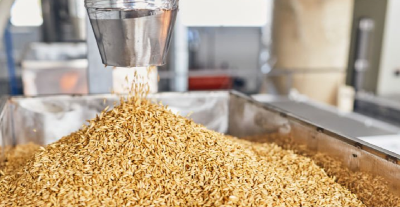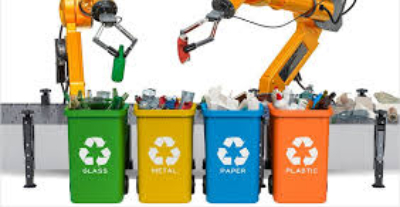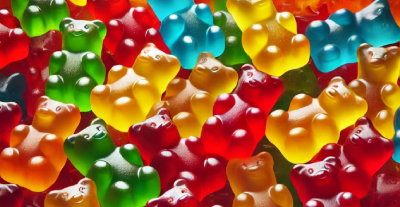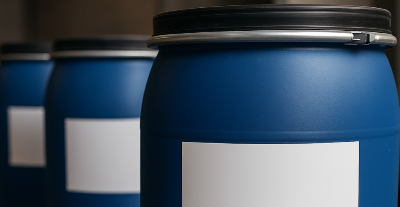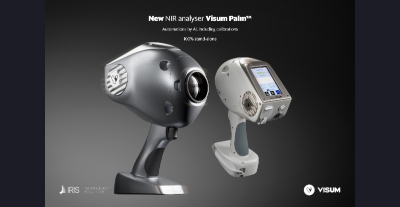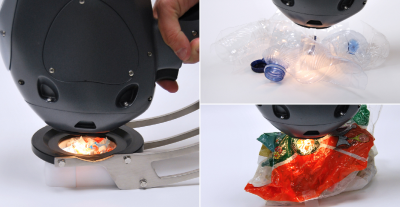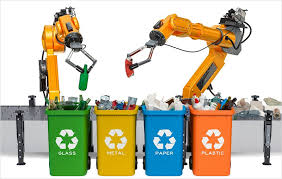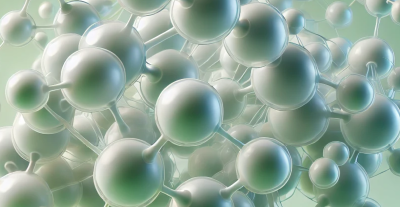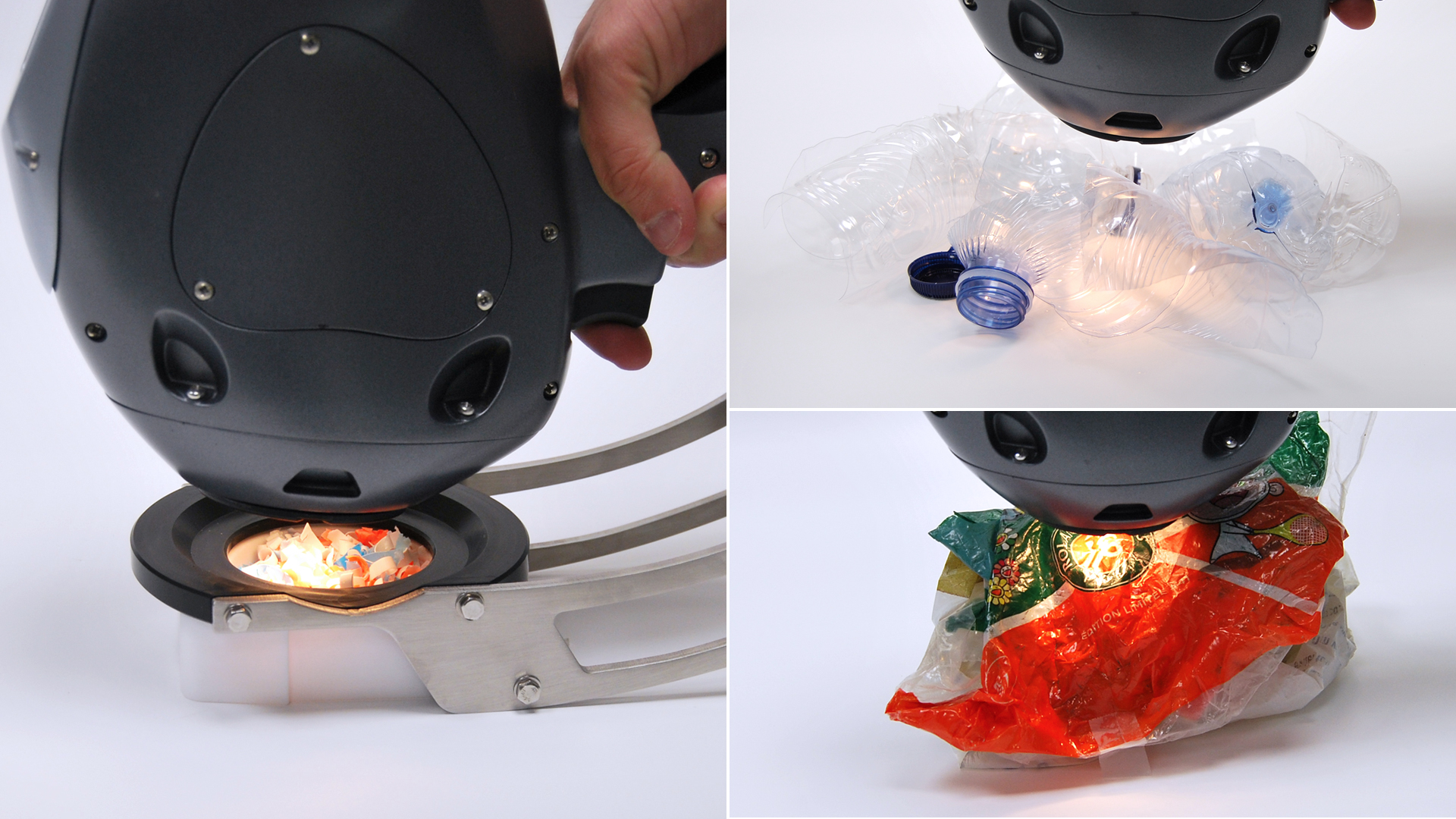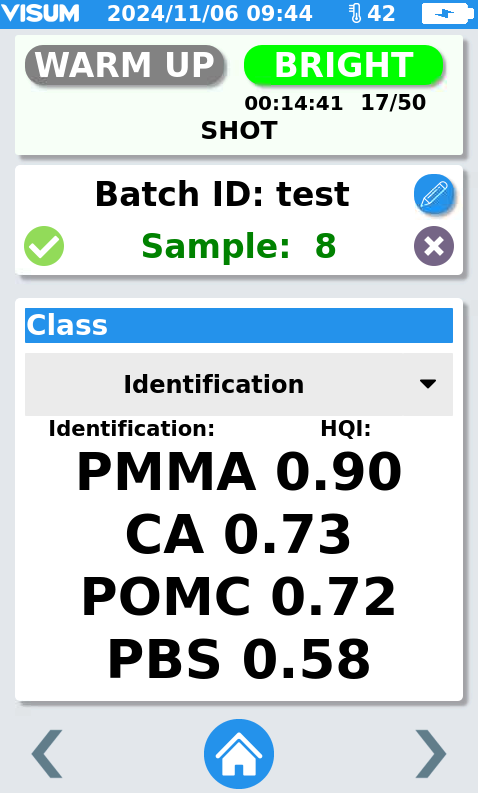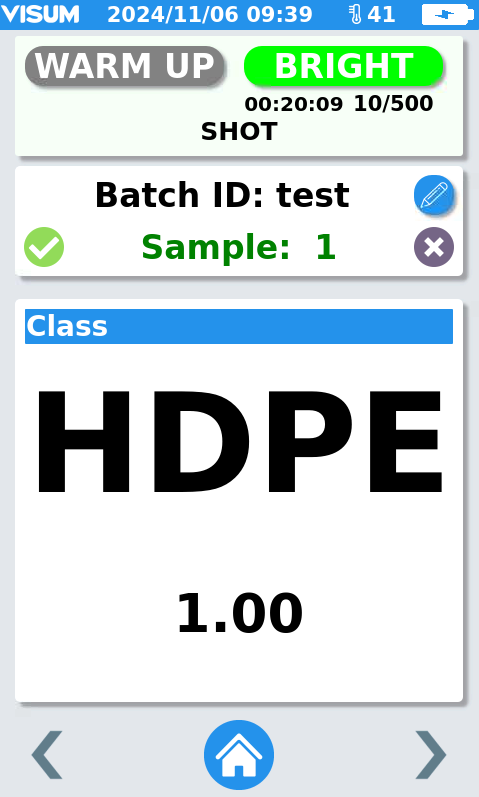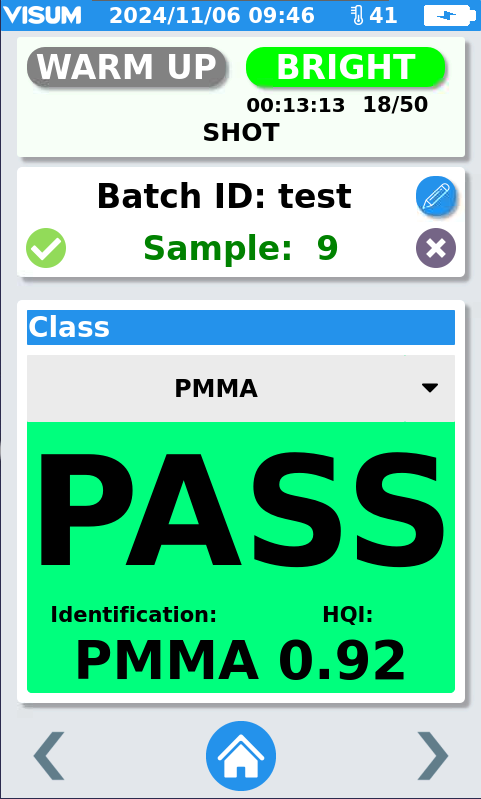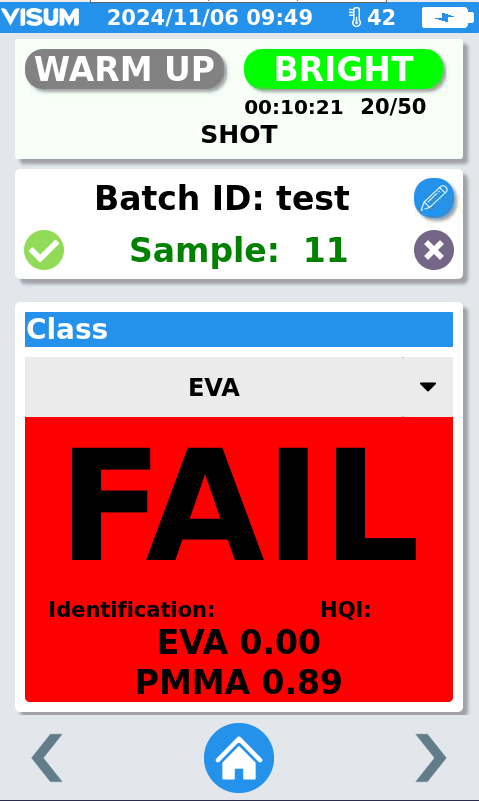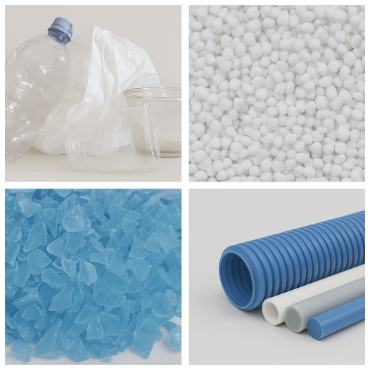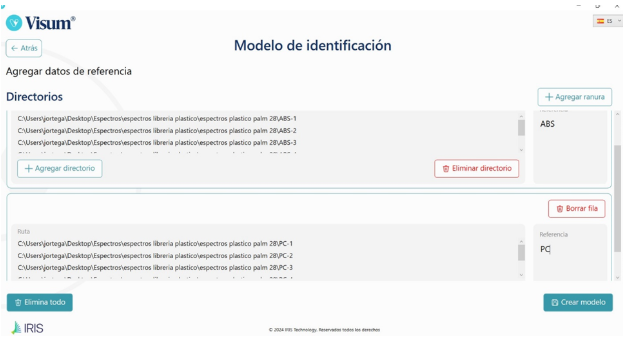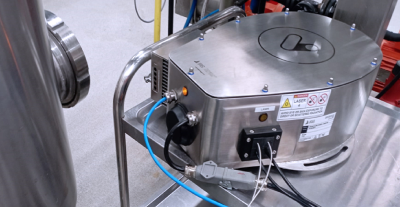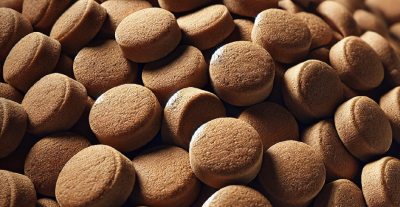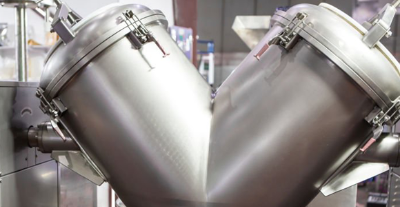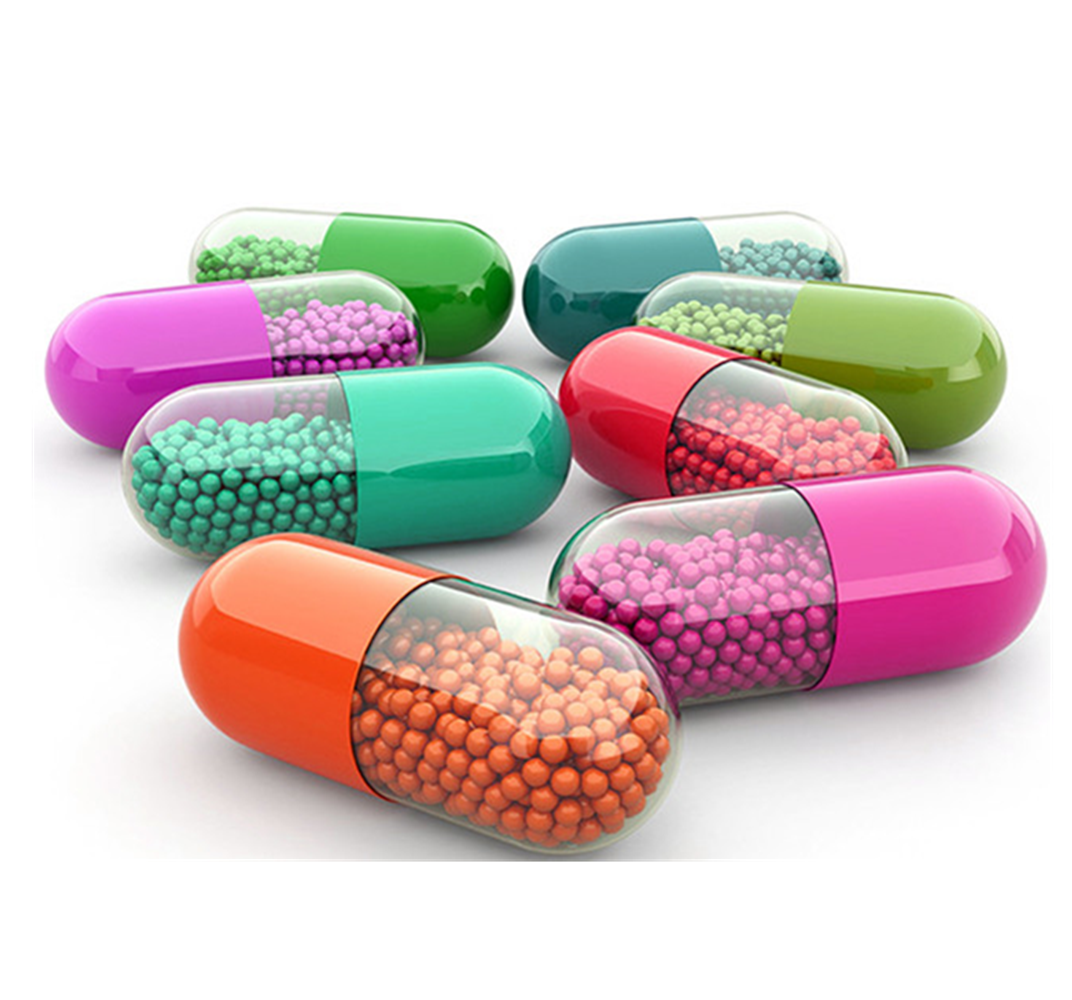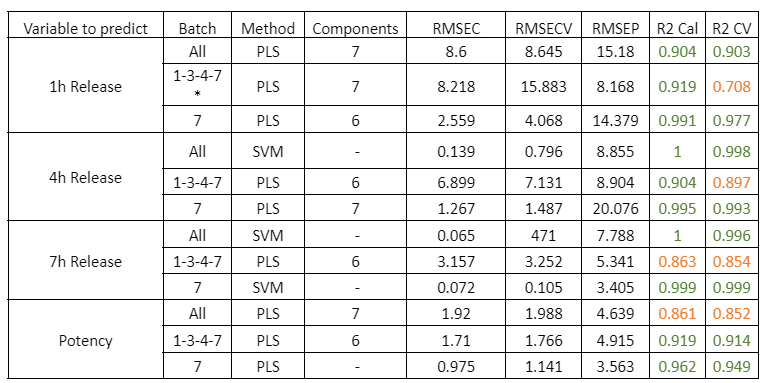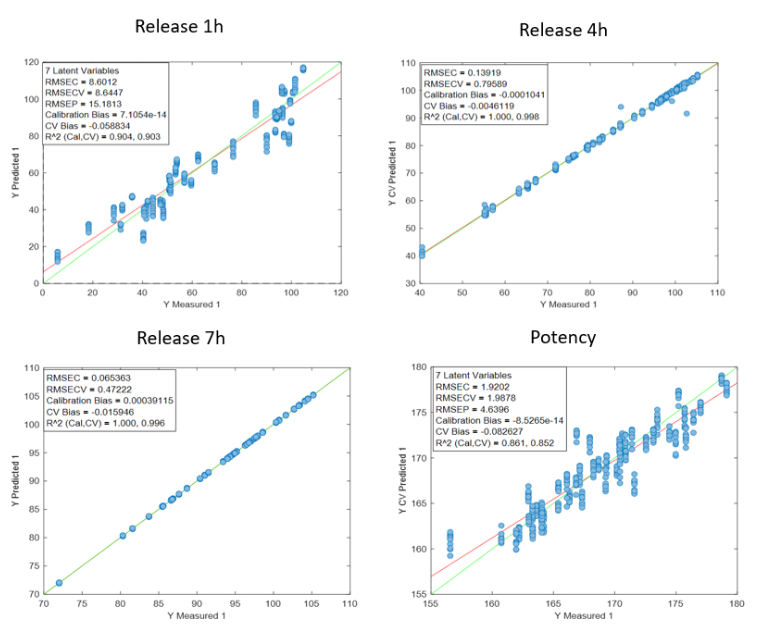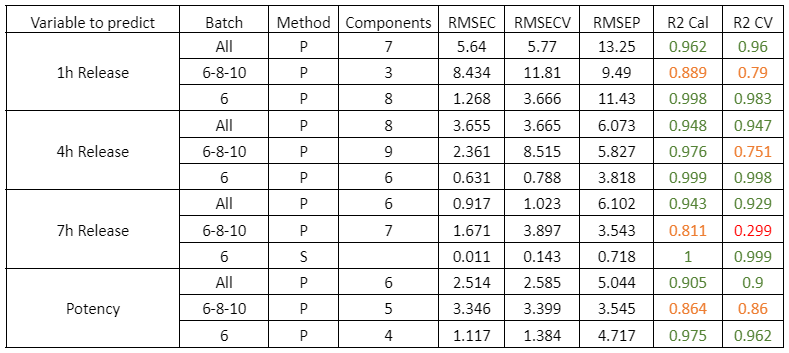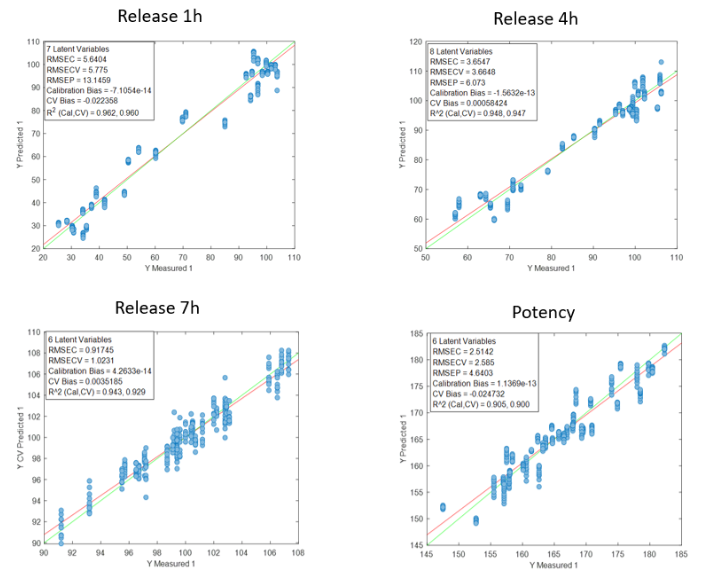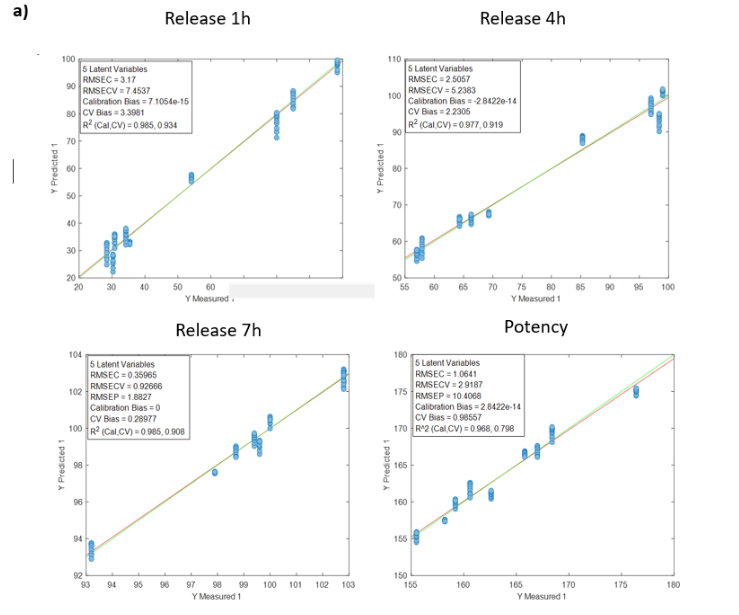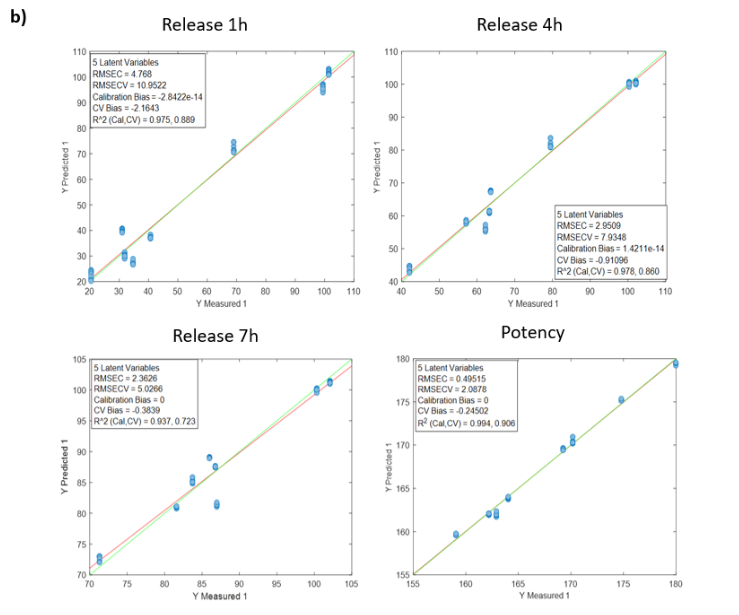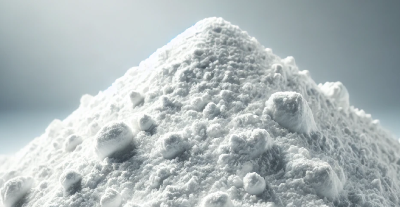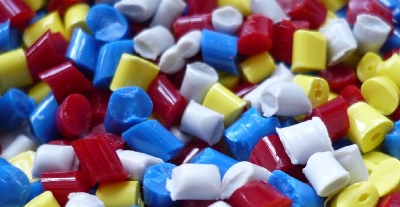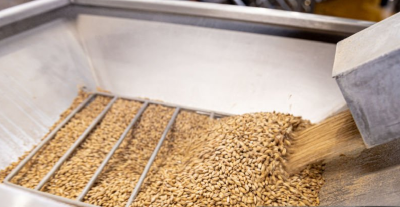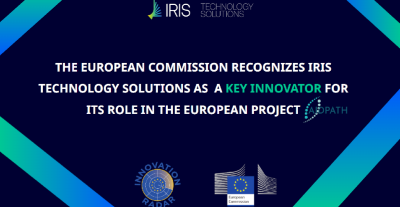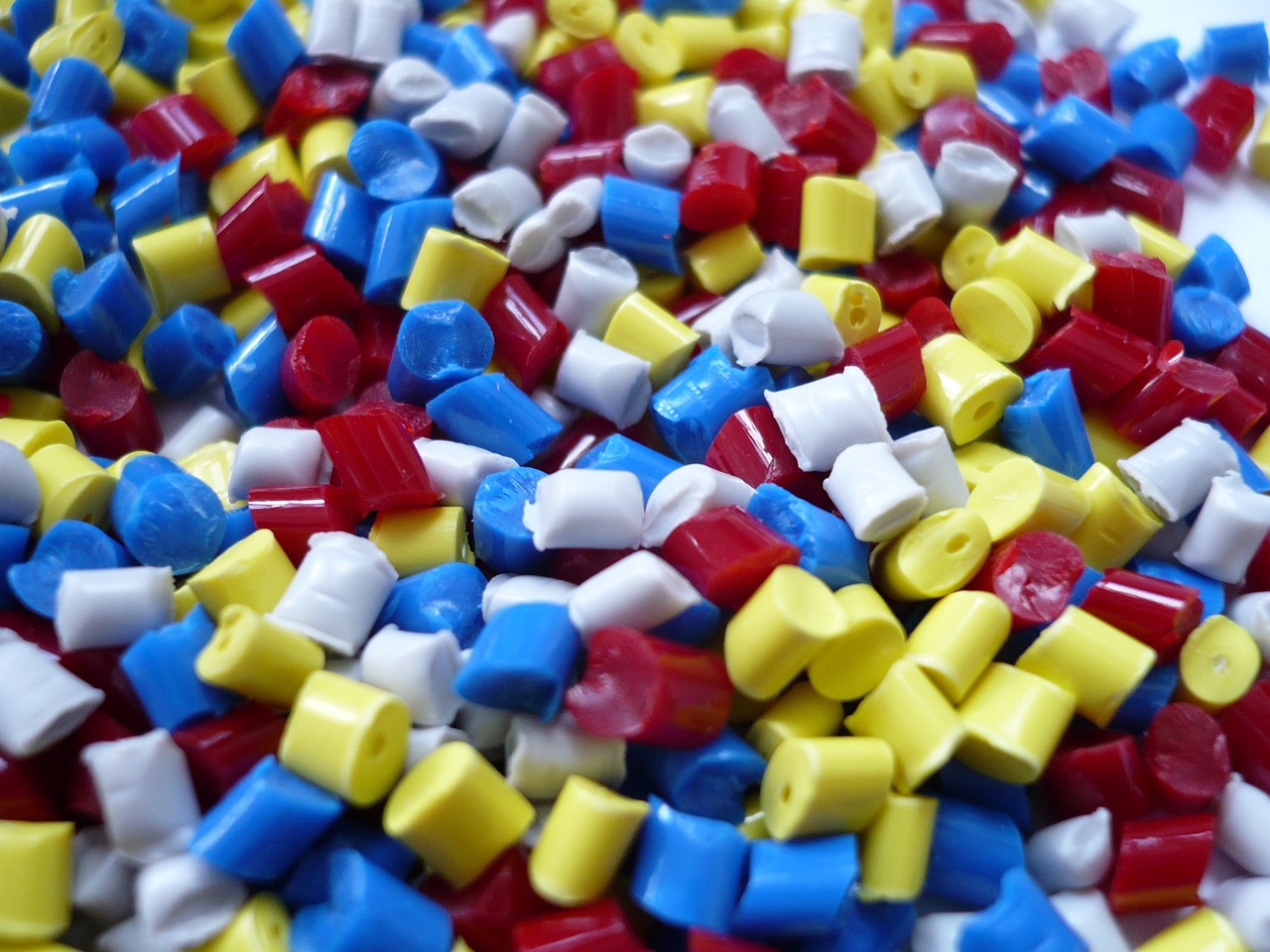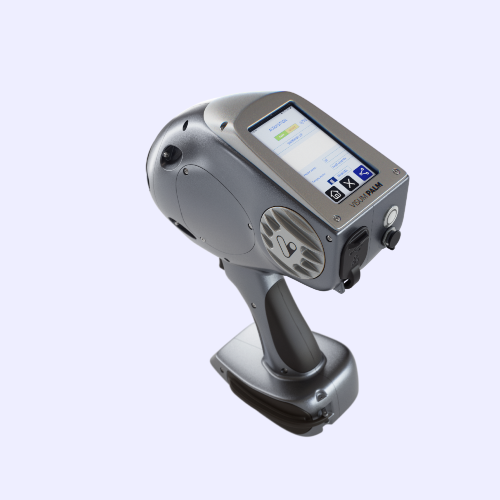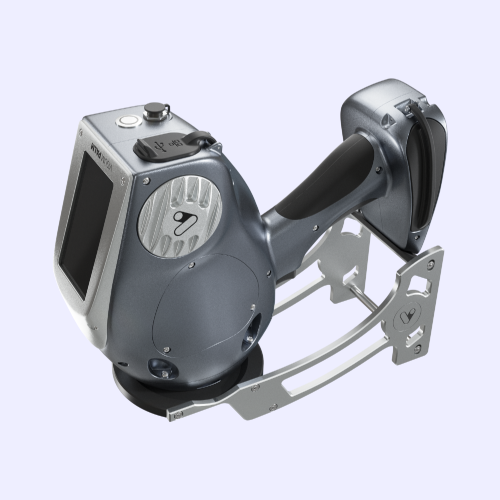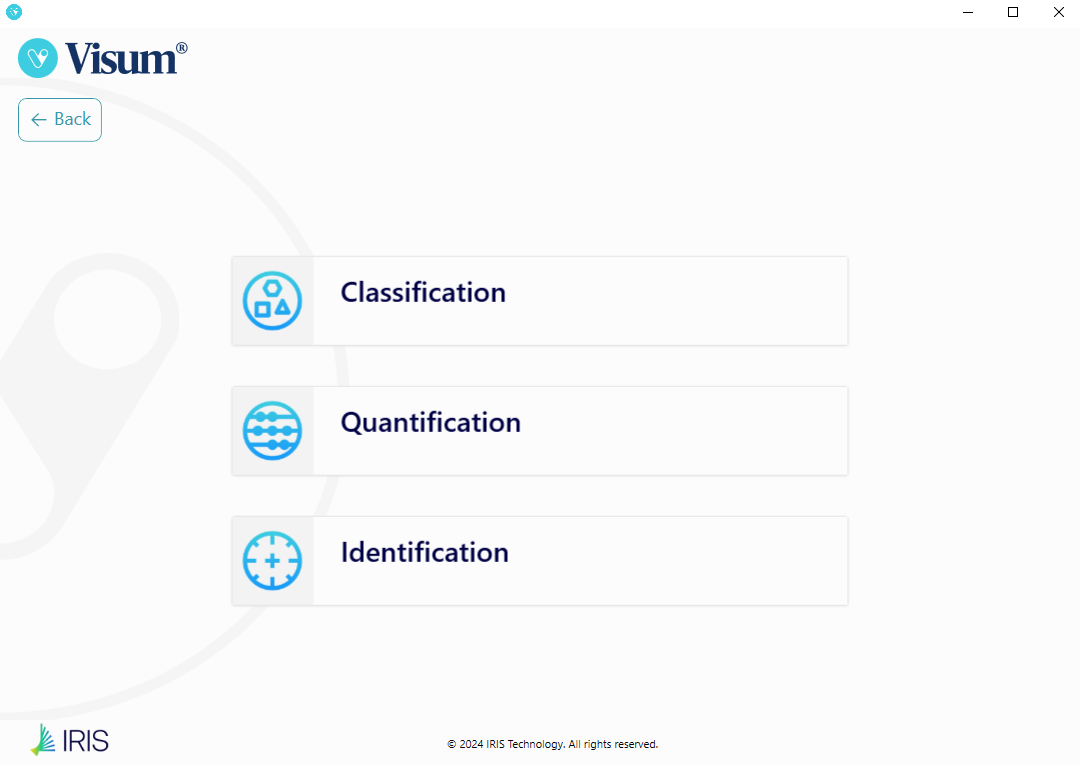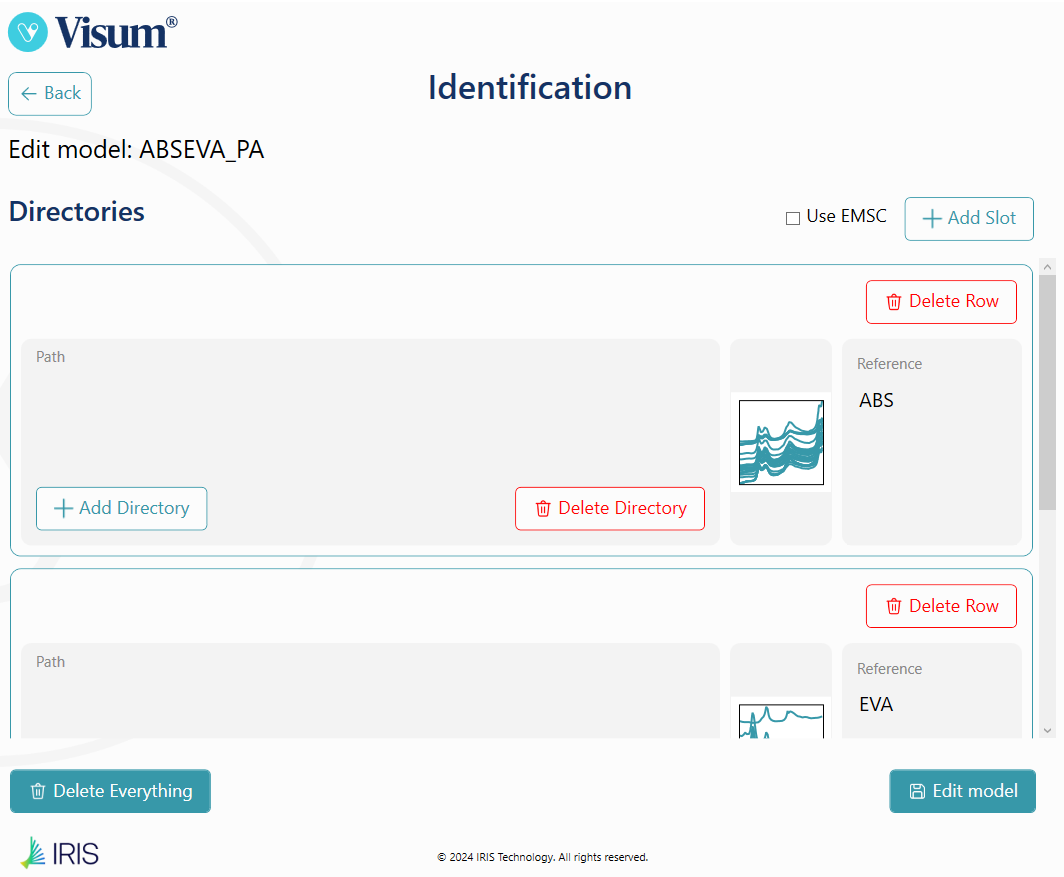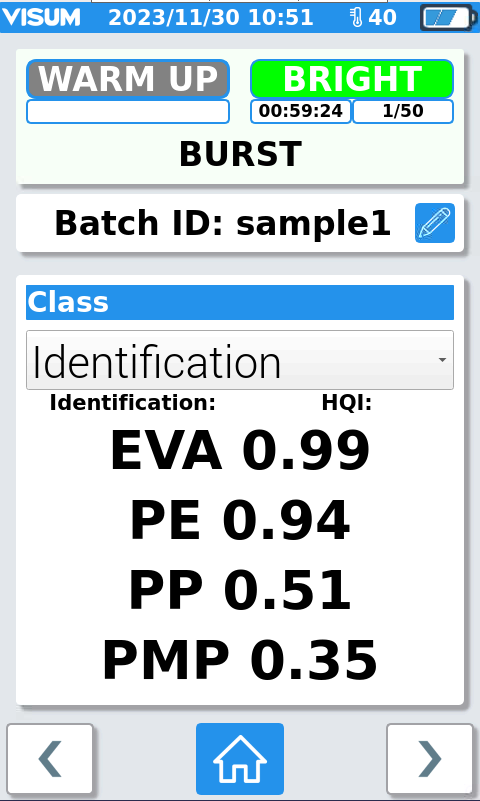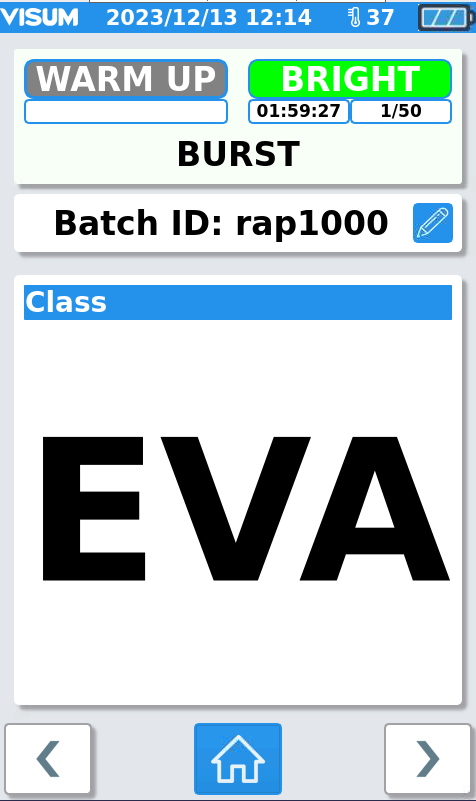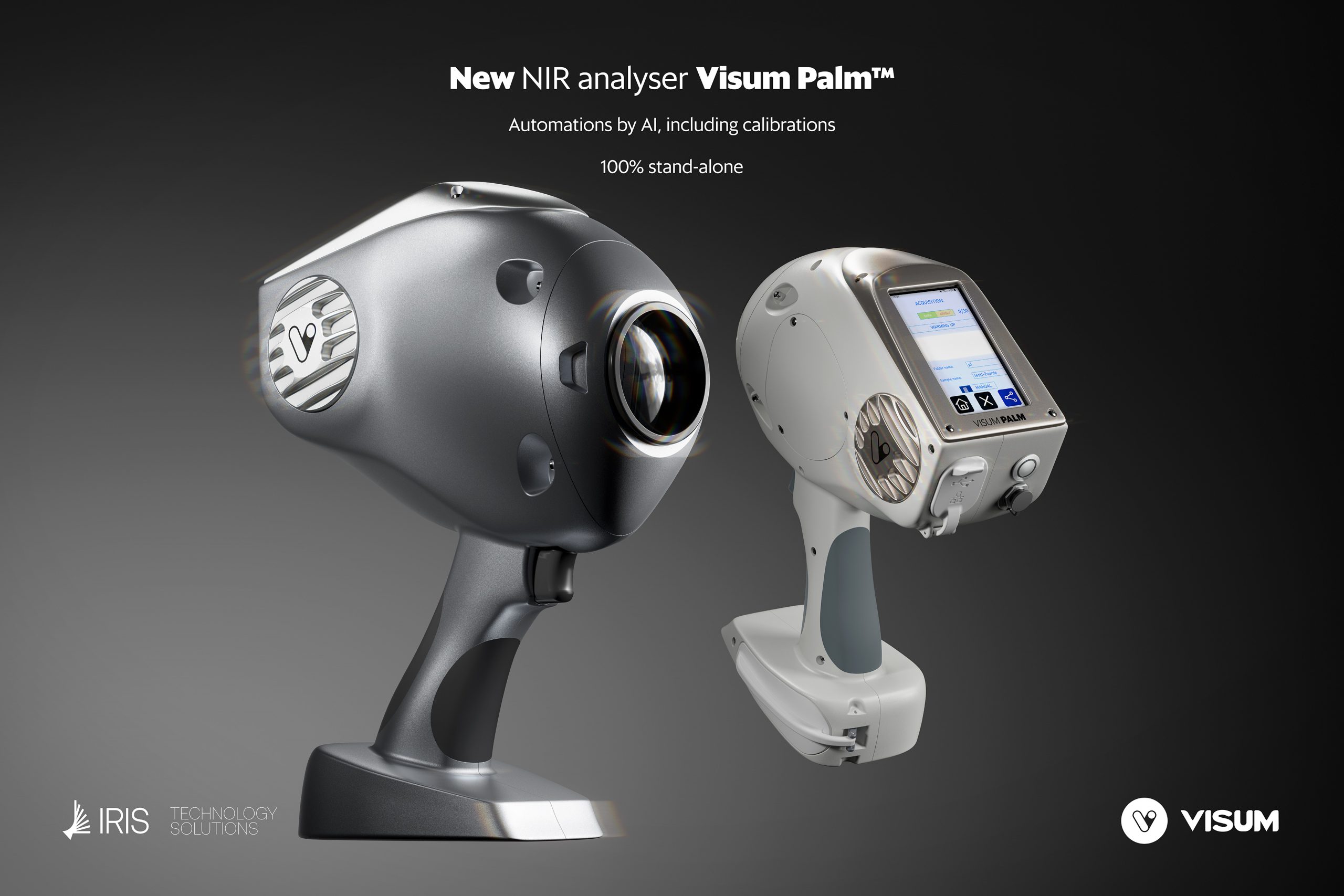
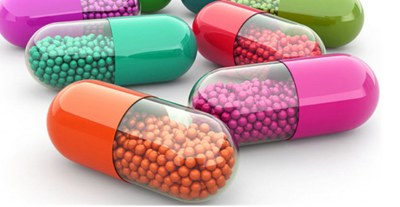 Control of the coating process of granular forms by NIR spectroscopy
Control of the coating process of granular forms by NIR spectroscopy
 Spektroskopia Ramana w procesie diafiltracji liposomów
Spektroskopia Ramana w procesie diafiltracji liposomów

Jaki jest najlepszy przenośny analizator NIR na rynku? Porównanie Visum Palm™ z innymi przenośnymi analizatorami
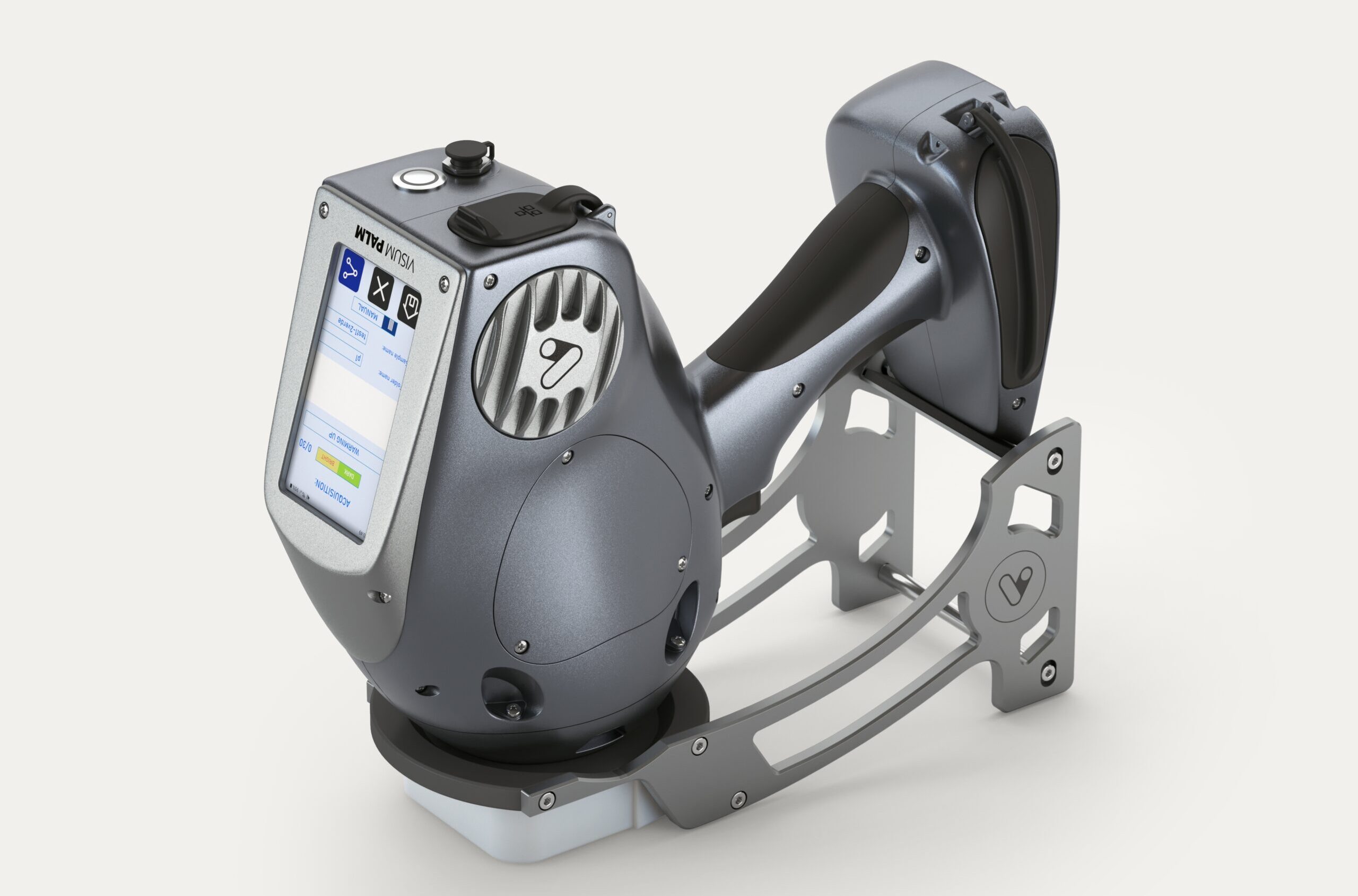
Jaki jest najlepszy przenośny analizator NIR na rynku?
Rynek przenośnych analizatorów NIR dynamicznie rośnie, a wraz z tym rośnie potrzeba jasnych i obiektywnych porównań technicznych. W tym artykule analizujemy najważniejsze urządzenia dostępne na rynku i porównujemy ich oficjalne specyfikacje z modelem Visum Palm™, aby pomóc Ci określić, który jest najlepszy przenośny analizator NIR na rynku, dostosowany do Twoich rzeczywistych potrzeb.
Analiza uwzględnia kluczowe parametry techniczne, takie jak zakres spektralny, rozdzielczość spektralna, konfiguracja optyczna oraz interfejs użytkownika, a także praktyczne aspekty użytkowania, kalibracji, wszechstronności oraz specjalizacji w sektorach regulowanych normami GMP i aplikacjach specjalistycznych.
Spektralbereich
Jednym z kluczowych czynników przy wyborze najlepszy przenośny analizator NIR jest zakres spektralny. Większość przenośnych analizatorów NIR, takich jak Visum Palm™, działa w zakresie od 900 do 1700 nm — jest to idealny zakres do analizy składników organicznych ze względu na wysoką koncentrację informacji chemicznej.
Chociaż istnieją modele z rozszerzonym zakresem (1300–2500 nm), zazwyczaj wyposażone w czujniki FT-NIR, w praktyce oba zakresy obejmują podobne parametry, z wyjątkiem bardzo specyficznych zastosowań oraz jakości samych czujników.
Visum Palm™ wyróżnia się jako najlepszy przenośny analizator NIR, ponieważ łączy ten optymalny zakres z przemysłowym czujnikiem o wysokiej rozdzielczości, oferując solidność i stabilność.
Mimo postępów w miniaturyzacji czujników, nadal istnieją wyzwania techniczne, takie jak wydajność przetwarzania, przegrzewanie się oraz, co omówimy dalej, rozdzielczość spektralna.
Rozdzielczość widmowa: Poznaj ją, aby wybrać najlepszy przenośny analizator NIR
Jeśli uznamy, że zakres spektralny to okno, przez które obserwujemy próbkę, to rozdzielczość spektralna odpowiada ostrości, z jaką rejestrujemy ten obraz spektralny. W przeciwieństwie do aparatów w telefonach komórkowych, w spektroskopii NIR niższa wartość rozdzielczości (czyli mniej nanometrów) oznacza większą zdolność do rozróżniania subtelnych różnic w składzie chemicznym, co przekłada się na wyższą precyzję, powtarzalność i jakość analityczną.
To jeden z czynników, które sprawiają, że Visum Palm™ to najlepszy przenośny analizator NIR – jego rozdzielczość spektralna wynosząca zaledwie 5 nm pozwala sprostać nawet najbardziej wymagającym wyzwaniom zarówno w przemyśle rolno-spożywczym, jak i w środowiskach regulowanych, takich jak przemysł farmaceutyczny zgodny z normami GMP.
Uwzględnienie rozdzielczości spektralnej jest kluczowe, jeśli zależy nam na precyzji. Jeśli celem jest jedynie szybki screening w terenie, tani przenośny analizator NIR może wystarczyć, choć z pewnymi ograniczeniami. Urządzenia o rozdzielczości powyżej 15 nm mogą być przydatne w niektórych przypadkach, ale ich duża wrażliwość na wodę, wyższy poziom szumu instrumentalnego oraz mniejsza ostrość widma sprawiają, że są nieodpowiednie do analizy cieczy lub wilgotnych próbek, a także do zastosowań laboratoryjnych czy produkcyjnych, gdzie wymagana jest niezawodność.
Ruchliwość
Zazwyczaj termin „przenośność” bywa nieco mylący. Zakłada się, że każdy analizator NIR określany jako przenośny rzeczywiście taki jest – i rzeczywiście tak jest – ale z istotnymi zastrzeżeniami, jeśli zamierzamy go używać w terenie, w magazynach surowców, przy linii produkcyjnej, w środowiskach regulowanych zgodnie z GMP lub w laboratorium.
W najbardziej zminiaturyzowanych modelach — gdzie wspomniano już o konieczności kontroli rozdzielczości spektralnej i dryftów temperaturowych — przenośność osiąga się poprzez oddzielenie sensora od jednostki przetwarzającej i wyświetlającej dane. W praktyce oznacza to konieczność korzystania z dwóch urządzeń: sensora oraz telefonu lub tabletu do przetwarzania i prezentacji wyników. To z kolei oznacza zajęcie obu rąk podczas analizy i konieczność utrzymywania odpowiedniej odległości między urządzeniami, by uniknąć problemów z połączeniem lub synchronizacją.
Kluczową wadą takiej konfiguracji – zwłaszcza w branżach regulowanych – jest skomplikowanie procesów kwalifikacji i walidacji, które trzeba przeprowadzać osobno dla każdego komponentu (sensor, urządzenie, oprogramowanie). To oznacza więcej pracy, dokumentacji i złożoności technicznej.
Dlatego Visum Palm™ to najlepszy przenośny analizator NIR – jest naprawdę przenośny i samowystarczalny. Posiada wbudowany komputer, autorskie oprogramowanie oraz ekran dotykowy, co umożliwia wykonywanie rutynowych analiz bez żadnych dodatkowych akcesoriów. Taka integracja znacząco upraszcza proces walidacji w środowiskach GMP i zwiększa efektywność operacyjną zarówno w terenie, jak i na hali produkcyjnej.
Kalibracje NIR: zadanie, które Visum Palm™ znacząco uprościł
Jak długo użytkownicy mają jeszcze zmagać się ze skomplikowanymi procesami kalibracji w spektroskopii NIR lub być zależni od producenta, gdy potrzebują stworzyć lub zaktualizować modele kalibracyjne? W większości analizatorów dostępnych na rynku — we wszystkich poza Visum Palm™ — tworzenie modeli ilościowych, identyfikacyjnych czy klasyfikacyjnych wymaga zaawansowanego oprogramowania oraz wiedzy z zakresu chemometrii: wyboru algorytmów, metod wstępnego przetwarzania, liczby zmiennych ukrytych i wielu innych aspektów, które wykraczają poza codzienne obowiązki przeciętnego analityka.
Jedną z ogromnych zalet urządzenia Visum Palm™ – najlepszy przenośny analizator NIR – jest to, że w swoim oprogramowaniu Visum Master™, zarówno w wersji SMART, jak i GMP, zawiera wbudowany automatyczny moduł Model Builder. Co to oznacza? Użytkownik musi jedynie wprowadzić widma próbek kalibracyjnych oraz ich wartości referencyjne. Resztę wykonuje oprogramowanie: automatycznie generuje setki kombinacji modeli, wybiera najlepszy na podstawie RMSE i R² oraz tworzy kompletny raport techniczny zawierający wszystkie szczegóły modelu: zastosowany algorytm, metody wstępnego przetwarzania, typ modelu, próbki, widma, wykryte punkty odstające i wiele więcej.
Taka automatyzacja nie tylko oszczędza wiele dni pracy technicznej, ale również spełnia wszystkie wymogi niezbędne do walidacji metod NIR w branżach regulowanych zgodnie z GMP, takich jak przemysł farmaceutyczny. Raport techniczny generowany przez Visum Master™ ułatwia zgodność z wytycznymi ICH Q2(R1) dotyczącymi walidacji metod analitycznych, które można znaleźć tutaj:
ICH Q2(R1) – Validation of Analytical Procedures
Umożliwienie każdemu użytkownikowi – nawet bez doświadczenia w chemometrii – tworzenia i aktualizacji własnych kalibracji to kolejny powód, dla którego Visum Palm™ wyróżnia się jako najlepszy przenośny analizator NIR na rynku i zapewnia użytkownikowi największą niezależność.
Tabela porównawcza Visum Palm™ z innymi przenośnymi analizatorami NIR: dlaczego to najlepszy przenośny analizator NIR
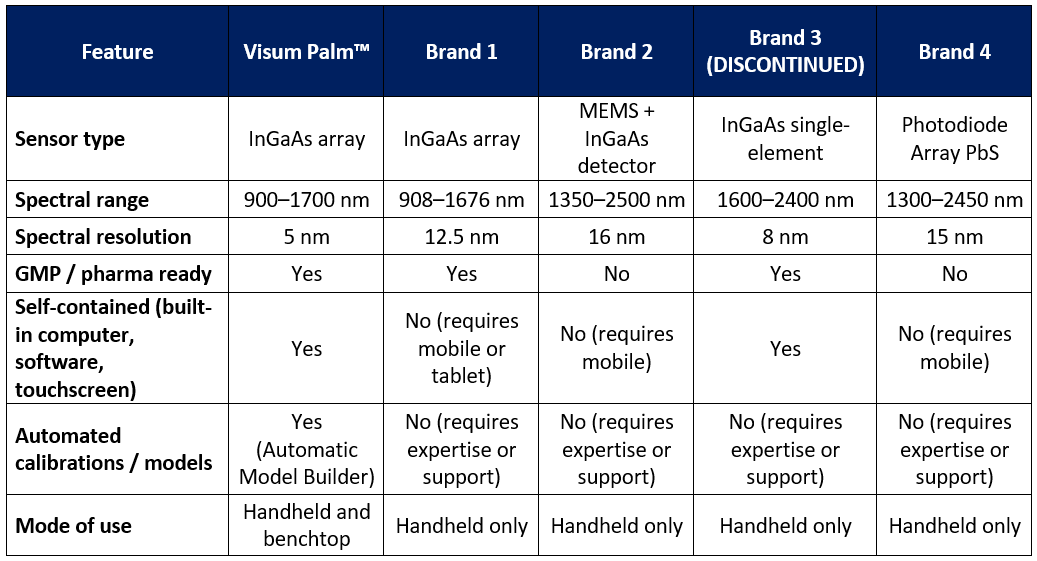
Konfiguracja optyczna i efektywna powierzchnia analizy – kluczowe elementy, które definiują najlepszy przenośny analizator NIR
Wniosek: który to najlepszy przenośny analizator NIR?
Z obiektywnego punktu widzenia, opartego na weryfikowalnych parametrach technicznych, Visum Palm™ wyraźnie przewyższa konkurencję. Jego zaawansowana sensoryka, wysoka rozdzielczość spektralna, stabilność, zoptymalizowana konfiguracja optyczna oraz zgodność z normami GMP i farmaceutycznymi, w połączeniu z automatycznymi funkcjami kalibracji i budowania modeli, czynią go urządzeniem, które z pełnym przekonaniem można określić jako najlepszy przenośny analizator NIR dostępny obecnie na rynku.
Warto jednak podkreślić, że wybór idealnego urządzenia nie powinien opierać się wyłącznie na jakości technicznej sensora – i nie to jest celem tego artykułu – lecz raczej na rozwianiu wielu niejasności i pominiętych kwestii, które często nie są poruszane podczas techniczno-konsultacyjnego procesu sprzedaży, a które mają kluczowe znaczenie, by użytkownik samodzielnie odpowiedział sobie na pytanie: który to naprawdę najlepszy przenośny analizator NIR i podjął świadomą decyzję dostosowaną do swoich konkretnych potrzeb.
W niektórych przypadkach wybór prostszego analizatora, który współpracuje z zewnętrznym smartfonem lub tabletem, może być uzasadniony – zwłaszcza gdy najważniejszym kryterium jest maksymalna mobilność, a urządzenie ma być używane głównie w terenie lub w środowiskach o mniej rygorystycznych wymaganiach jakościowych.
Dlatego przy wyborze najlepszego przenośnego analizatora NIR kluczowe jest uwzględnienie środowiska pracy, rodzaju analizowanego materiału, parametrów krytycznych oraz poziomu wymagań w zakresie kontroli jakości lub kwalifikacji. Tylko wtedy możliwy jest wybór rozwiązania najlepiej dopasowanego do realnych potrzeb – czy to prostszego i tańszego narzędzia do podstawowych zadań, czy też solidnego, przemysłowego, walidowalnego i w pełni autonomicznego systemu, jakim jest Visum Palm™, przeznaczonego do wymagających środowisk produkcyjnych i obszarów regulowanych zgodnie z GMP.
